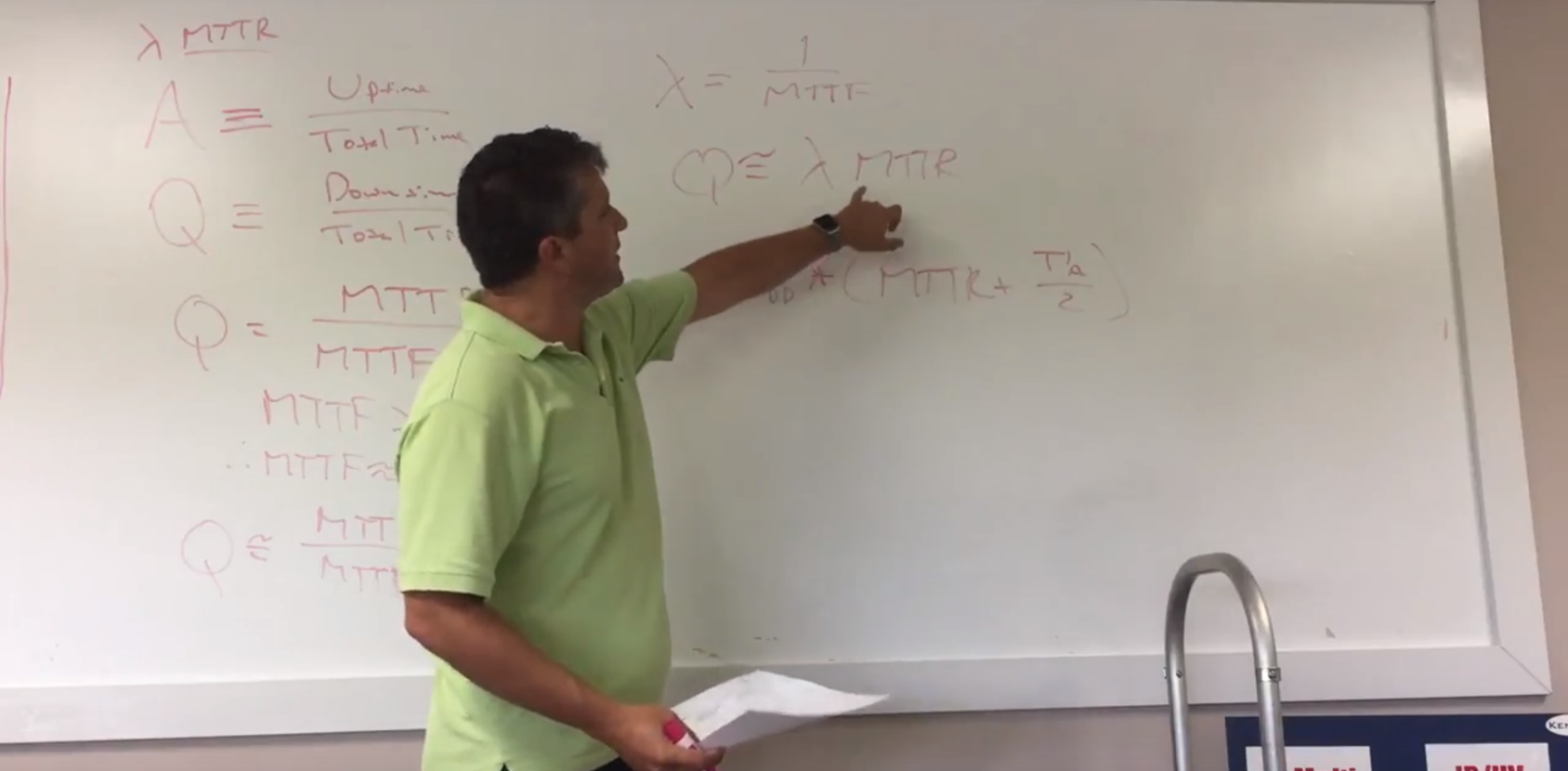Have you ever wondered where the equations that are used to calculate probability of failure on demand for SIL verification came from? In this video, Kenexis CEO Ed Marszal goes the white board to show you. This video will demonstrate how all of the equations are based on the fundamental definitions of availability and reliability. These definitions are then applied to SIS component failures that can be detected through diagnostics, cannot be detected by diagnostics, or can never be detected – even through manual proof tests. The equations also consider whether or not the process plant is shut down as the result of detected failures of SIS components, and the impact of bypassing SIS equipment to perform online testing.
These equations are at the heart of the Kenexis Vertigo SIS Safety Lifecycle Management software, and are essentially precise analytical solutions as for the most common SIS applications (as opposed to the numerical approximations that are utilized in other software tools). You can learn more about Vertigo on the Vertigo product web page. Of course, if your situation is too complex to model with the standard equations for the most common equipment architectures, you can always model them with out Arbor Fault Tree Analysis tool and still tightly integrate the results into a Vertigo Study.
You should note that our speaker went a bit too fast and informal in exaplaining the rare event approximation that causes unreliability to be approximately equal to the failure rate multiplied by the test interval (around 12:28 in the video). While correctly explaining that only the first few terms of the MacLaurin Series, he cuts of few corners in explaining why.
The MacLaurin series for e^x is as follows:
e^x = 1 + x + 1/2 x^2 + 1/6 x^3 + 1/24 x^4 + …
Replacing (lambda*T) for x, and then moving the 1 to the left side of the equation (because unreliability is 1-e^(-lambda*T), you get:
1-e^(-lambda*T) = lambda*T + 1/2 (-lambda*T)^2 + …
Removing all of the infinite series other than the first term results in an approximation of (lamda*T) for unreliability, which is relatively accurate when failure rates are small, like they must be to even achieve a SIL 1 probability of failure on demand.

